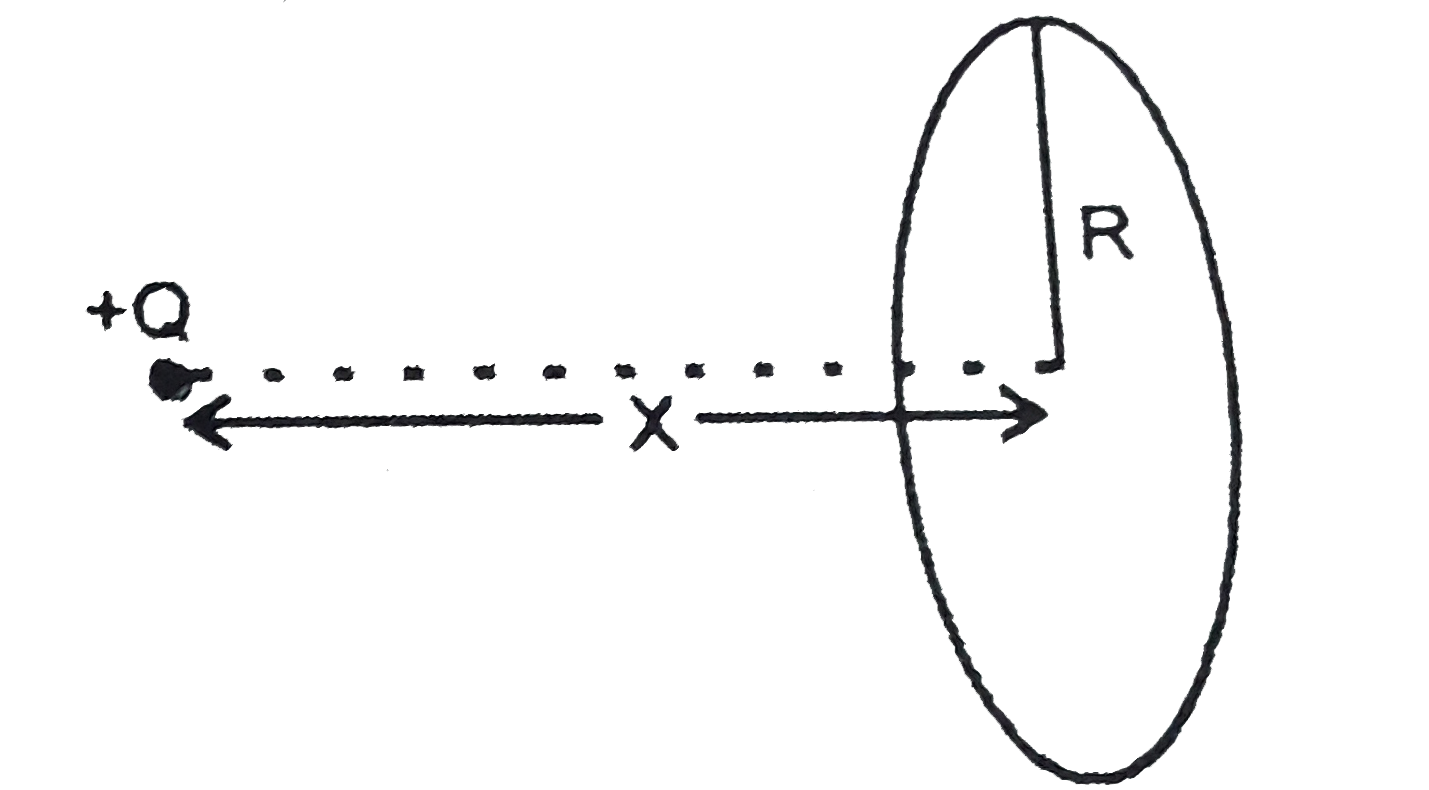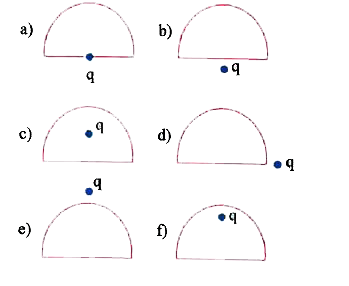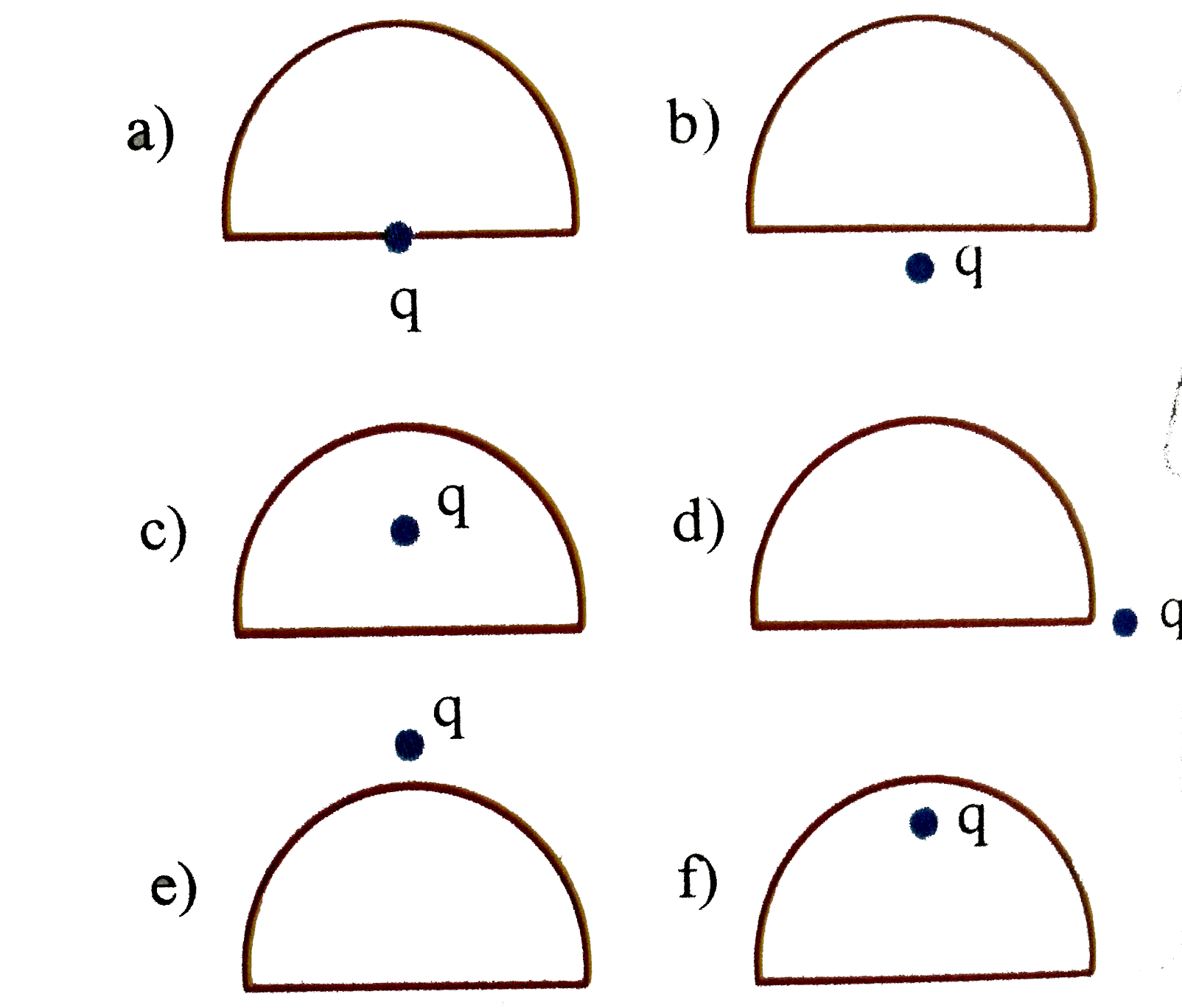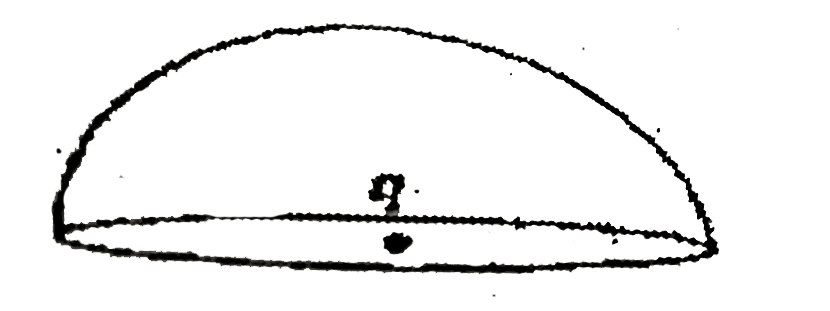Find the flux of point charge q through the square surface ABCD as shown (##JM21_M220210224_PHY09_Q01##)
(A)q6ε0 (B)qε0 (C)q4ε0 (D)q2ε0
Find the flux of point charge q through the square surface ABCD as shown (##JM21_M220210224_PHY09_Q01##)
not varying with r
varying as r2
The correct Answer is:B
El=dϕdt=SdBdt
∴E(2πr)=πr2dBdt
or E=r2dBdt or E∝r
Topper's Solved these Questions
- ELECTROMAGNETIC INDUCTIONBOOK - DC PANDEYCHAPTER - ELECTROMAGNETIC INDUCTIONEXERCISE - Level 2 More Than One Correct
10 Videos
- ELECTROMAGNETIC INDUCTIONBOOK - DC PANDEYCHAPTER - ELECTROMAGNETIC INDUCTIONEXERCISE - Level 2 Comprehension Based
13 Videos
- ELECTROMAGNETIC INDUCTIONBOOK - DC PANDEYCHAPTER - ELECTROMAGNETIC INDUCTIONEXERCISE - Level 1 Subjective
21 Videos
- CURRENT ELECTRICITYBOOK - DC PANDEYCHAPTER - CURRENT ELECTRICITYEXERCISE - Medical entrances gallery
97 Videos
- ELECTROMAGNETIC WAVESBOOK - DC PANDEYCHAPTER - ELECTROMAGNETIC WAVESEXERCISE - Sec C
22 Videos
Similar Questions
A square of side a=12cm placed in Xy plane centre at origin . A charge q=12 μC place at z=6cm. If flux through square plate ix X×102, then find x: (##JM_21_M2_20210224_PHY_27_Q01.png" width="80%">
View SolutionFind the electric flux due to a point charge 'Q' through the circular region of radius R if the charge is placed on the axis of ring at a distance x.

View Solution
Knowledge Check
Find the total flux due to charge q associated with the given hemispherical surface
 A(a)q2ε0,(b)0,(c)qε0,(d)0,(e)0(f)qε0B(a)0,(b)q2ε0,(c)0,(d)qε0,(e)0(f)qε0C(a)q2ε0,(b)qε0,(c)0,(d)qε0,(e)0(f)qε0D(a)0,(b)q2ε0,(c)0(d)qε0,(e)qε0(f)qε0
A(a)q2ε0,(b)0,(c)qε0,(d)0,(e)0(f)qε0B(a)0,(b)q2ε0,(c)0,(d)qε0,(e)0(f)qε0C(a)q2ε0,(b)qε0,(c)0,(d)qε0,(e)0(f)qε0D(a)0,(b)q2ε0,(c)0(d)qε0,(e)qε0(f)qε0Find the total flux due to charge qassociated with the given hemisphercal surface
 Aq2ε0,(b)0,(c)qε0,(d)0,(e)qε0B(a)0,(b)q2ε0,(c)0,(d)qε0,(e)0,(f)qε0C(a)0,(b)q2ε0,(c)0,(d)qε0,(e)0,(f)qε0D(a)0,(b)q2ε0,(c)0,(d)qε0,(e)qε0(f)qε0
Aq2ε0,(b)0,(c)qε0,(d)0,(e)qε0B(a)0,(b)q2ε0,(c)0,(d)qε0,(e)0,(f)qε0C(a)0,(b)q2ε0,(c)0,(d)qε0,(e)0,(f)qε0D(a)0,(b)q2ε0,(c)0,(d)qε0,(e)qε0(f)qε0Electric flux through a cube with charge q inside is
Aqε0Bq6ε0Cq3ε0D0
Five point charges each of charges +q are placed of five vertices of a regular hexagon of side 'l'. Find the magnitude of the resultant force on a charge -q placed at the centre of the hexagon.
(##U_LIK_SP_PHY_XII_C01_E09_018_Q01.png" width="80%">
View SolutionFour point charges qA=2μC,qB=5μC,qC=2μCandqD=5μC are located at the corners of a square ABCD of side 10 cm. What is the force on a charge of 1μC placed at the centre of the square ?
(##U_LIK_SP_PHY_XII_C01_E01_006_Q01.png" width="80%">
View SolutionFind flux through the hemispherical cup due to the charge q placed as shown in figure -

View SolutionTwo charges q and 2q are placed at heights a/2 and a respectively from plane of the square surface ABCD. Then flux through the square surface is: 29 9 a a 2 В. C Center a D
View SolutionIn a coil of resistance 10ohm, the induced current developed by changing magnetic flux through it is shown in figure as a function of time. The magnitade of change in flux (in weber) through the coil is
'(##CEN_KSR_PHY_JEE_CO23_E01_007_Q01##)'
View Solution
